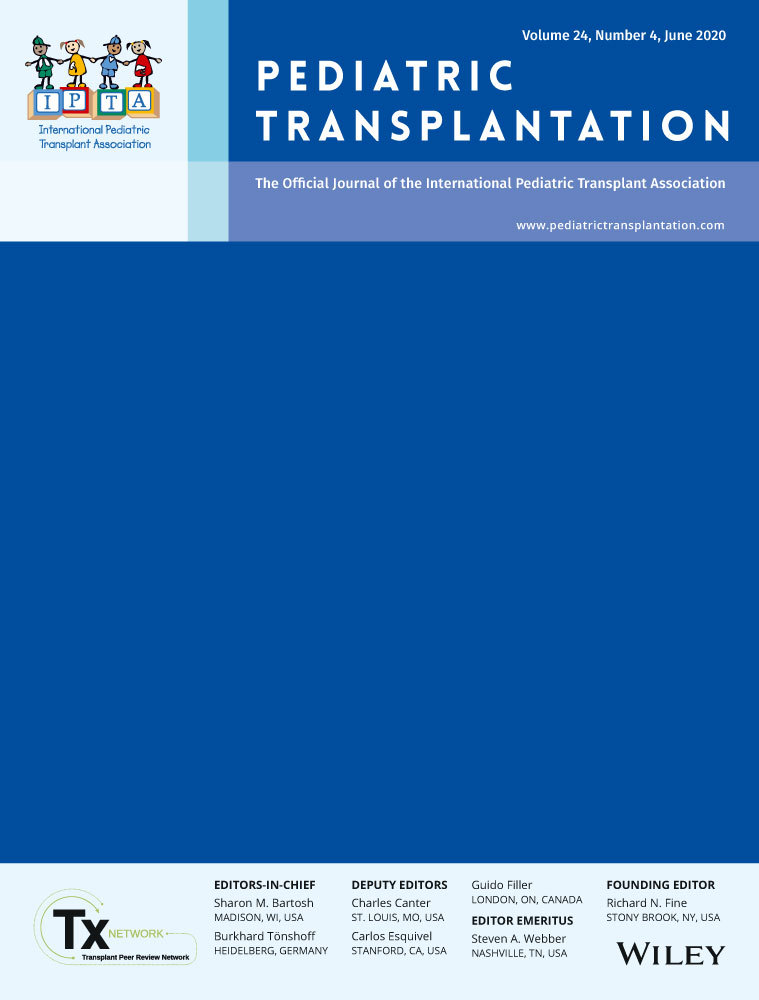Educational and learning morbidity in pediatric heart transplant recipients: A pediatric heart transplant society study
Abstract
Educational development is an important component of quality of life for children with heart transplant. Aims include determining prevalence of and risk factors for modified education placement in a large representative sample of pediatric heart transplant recipients. Participants included 1495 patients (age 6-18 years) from the PHTS database. Data on education placement and clinical predictors were collected at listing and at 1 and 3 years post-transplant. At listing, 88% of patients were in typical education placement, while 12% were in modified education. Males (P = .02), those with CHD (P < .0001), those with non-private insurance (P < .0001), and those with longer hospital stay (P = .001) were more likely to be in a modified education placement at time of listing. Age, race, listing status, mechanical support, and waitlist time were not significantly associated with placement. The prevalence of typical education placement was similar (87% at 1-year and 86% at 3-year) post-transplant. Predictors of modified education placement at 3-year follow-up included placement at listing (OR = 12.9 [95% CI 7.6-21.9], P < .0001), non-private insurance (OR = 2.0 [95% CI 1.3-3.2], P = .001), CHD (OR = 1.8 [95% CI 1.1-2.7, P = .01), history of post-transplant infection (OR = 1.9 [95% CI 1.2-2.9, P = .007), and number of post-transplant infections (OR = 1.3 [95% CI 1.1-1.5, P = .002). Among pediatric heart transplant recipients, males, those with non-private insurance, those with CHD, and those who experience post-transplant infections are at greatest risk for modified academic placement, which persists for several years post-transplant and deserves targeted intervention.




